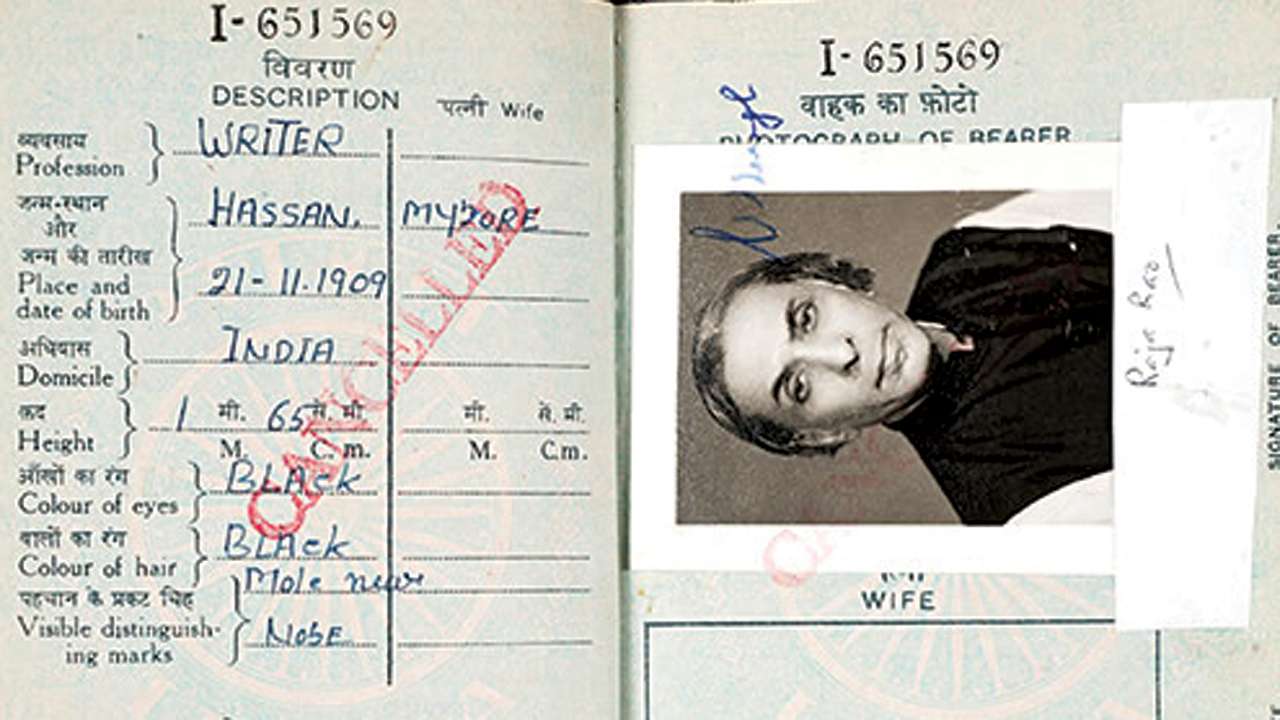
On Sunday, July 8, 2018, it will be 12 years since Raja Rao peacefully passed away in Austin, Texas, so far away from his beloved India. Rao’s life had overlapped most of the 20th century, the most turbulent and violent period in human history. Over 100 million people died unnatural deaths owing to man-made wars, conflicts, famines, and ideological misadventures in this bloodiest of centuries. It would be no exaggeration to say that more than any other contemporary Indian writer, it was Rao who engaged most seriously with the problem of human suffering and its solution.
The urgency behind this recollection of Rao’s extraordinary life and oeuvre is not just his approaching “aaradhana”, which is how we celebrate a great person’s death anniversary. The bigger reason is that I am at this moment looking at the astonishing Raja Rao archive, bequeathed to the Harry Ransom Humanities Research Center, University of Texas at Austin, by his wife Susan. The Raja Rao papers are spread across 42 cartons and 5 document boxes. I am fortunate to be the first scholar to take a comprehensive look at the whole collection.
Before these papers were given to the Ransom Center, they were stored in many boxes. The most important of these were lodged in the basement of Rao’s Pearl Street apartment, not too far from the university, where he taught philosophy for 20 years. I had published several papers on him earlier, in addition to editing The Best of Raja Rao, a volume of his selected works. But more important was the personal connection, nurtured since my first contact with him in 1981 as a graduate student at the University of Illinois at Urbana-Champaign.
Rao, then in his early seventies, had come to lecture in a class taught by the famous Professor of Linguistics and authority on World Englishes, Braj B. Kachru. Great writer though he was, Rao was not only unbelievably gracious to me but fostered a bond, which only grew deeper with the years. I was one of the few in the wide circle of Rao’s admirers, scholars, students, and friends who not only saw some of these unpublished works when he was alive but also had an idea of what he meant to do with them. One of his strong wishes was the publication of the two remaining volumes of his beloved Chessmaster trilogy. The first volume, The Chessmaster and His Moves, which came out in 1988, was awarded the prestigious Neustadt International Prize, often called the “mini-Nobel.”
Rao was working on the remaining unpublished volumes, “Daughter of the Mountain” and “Myrobalan in the Palm of the Hand,” till practically his last days, stopping only when his health seriously deteriorated. While I read the unedited typescripts, with squiggles of the author’s handwritten corrections, I was astounded at just how significant the unpublished works were. I am convinced that when the trilogy is finally published it will be one of the longest and most distinguished works of fiction in the English language.
Rao, who considered writing a sadhana, a spiritual discipline, himself called the trilogy an extended dialogue between the Brahmin and the Rabbi or between zero and infinity. Reading and studying him, I felt his words, like Bhartrihari’s notion of vac, were meant to lead us from the mundane-material to the transcendental-sublime. Rao’s writings have the capacity to lift our consciousness from the lowest depths of the horrors of human experience to the heights of wholeness, integrity, and liberation.
What has overwhelmed me even more since I started examining the papers at the Ransom Center is the huge quantum of material waiting to be resurrected and brought to light. Not only the above two volumes of the Chessmaster trilogy, but other novels, plays, essays, translations, besides several older and occasional pieces. For instance, I came across two unpublished essays, one on the Watergate scandal in the US and another intriguingly titled “How to Defeat Communism.” Raja Rao, I know now more than ever, was an outstanding thinker, philosopher, and champion of Indic civilisation, in addition to being one of the greatest writers of the 20th century.
That is why we must not only commemorate him, but also endeavour to do justice to his unfinished projects.
The first of the latter ought to be, according to his wife Susan, a volume of his essays on Indian philosophy, its centre piece a fascinating series of reflections called “The Saints and the Sage.” I am convinced that the time is ripe to offer this and other Raja Rao works to a discerning reading public because India has changed so much. It is at last ready to receive his myriad gifts of heart, mind, and spirit.
The author is a poet and professor at JNU. Views expressed are personal.